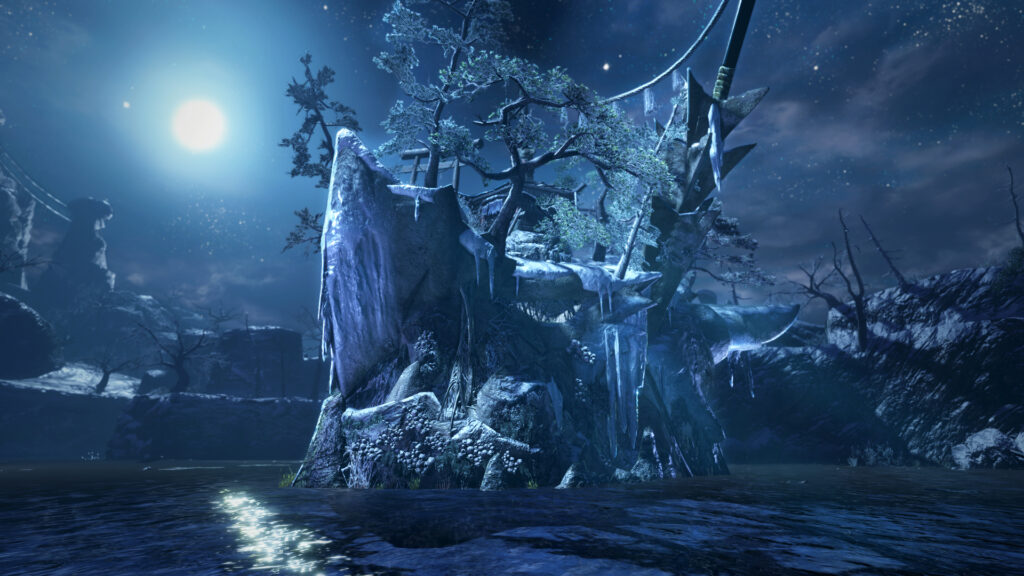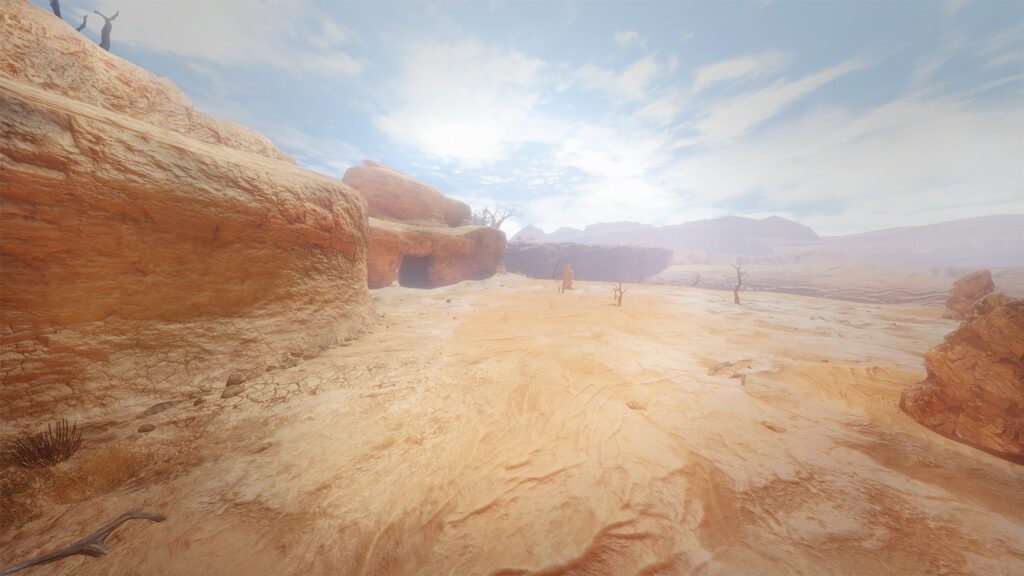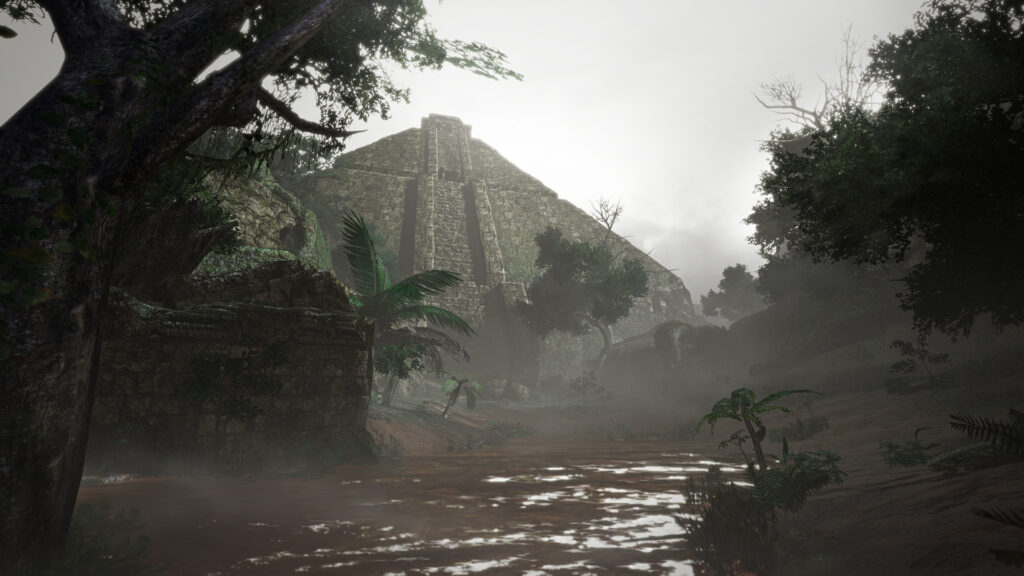Features
Ranking the Major Areas of Monster Hunter Rise
This list aims to rank all five major areas in Monster Hunter Rise to see which ones best accommodate the new movement system.

The Maps and Locations of Monster Hunter Rise
Exploration has always been a fairly significant aspect of the Monster Hunter franchise. Although the main attraction has and always will be the monster hunts, the games all feature sizeable maps with numerous secrets to uncover, and players are continually tasked with navigating these areas to find and catch up with their targets. Monster Hunter Rise is certainly no exception, and while its five major areas are somewhat unremarkable in terms of theming, they mark a major step up from previous entries when it comes to environmental traversal. The newly-introduced Wirebug mechanic, which allows players to zip across the playing field in any direction, grants an unprecedented degree of control and versatility to the movement, and the environments were built specifically to accommodate the feature. The areas in Monster Hunter Rise vastly increased the vertical playing space compared to those of prior installments, adding a whole new dimension to exploration. Some areas take better advantage of players’ newfound freedom than others, however, so it is worth ranking these levels and seeing how they all stack against one another in terms of design.
What is the Best Designed Level in Monster Hunter Rise?

5) Lava Caverns
The last area players are likely to come across when progressing through Monster Hunter Rise’s Village Quests, the Lava Caverns is far from irredeemable. The area feels massive in scope, with an expansive lower section that can be accessed through gargantuan drops from high cliffs. This lower section features a number of distinct backdrops, such as a large ring of rock with a lavafall in the middle, that help give players some idea of where they are in relation to other parts of the map. Lava Caverns is also the only major area to feature environmental hazards in the form of superheated ground, providing a welcome change of pace and an extra element to consider when battling monsters. Most interestingly, the level features at least one notable secret area—a series of cliffs overlooking a massive pool of lava. It is a fairly well-hidden area that few players are likely to find, and while it is mostly inconsequential within the context of the game, finding it is an intrinsically rewarding experience that encourages players to ponder over how big the game’s environments truly are.
Lava Caverns’ high highs are unfortunately offset by some low lows. The level can be rather confusing to navigate, with complex networks of paths riddled with invisible walls. Not only are these invisible walls immersion-breaking, but they needlessly obfuscate where players need to go to reach their target destinations. In addition, the area can come across as a bit too vertical; if players accidentally fall into the aforementioned massive chasms, the limitations of the Wirebug mechanic practically require players to find their way across these complicated paths to escape if they opt not to use fast travel, and there are only a handful of ways to return to the upper section. To make matters worse, some of these paths leading to the upper section consist of somewhat automated wind drafts that barely take advantage of the Wirebug’s versatility, and this combined with the previously-mentioned issues make navigation feel restrictive and unsatisfying. And for as varied and interesting as the lower section is, the upper section feels comparatively sterile and homogenous, which makes it less engaging to explore and somewhat complicates the navigation process due to the lack of notable landmarks. All of these issues make Lava Caverns feel like Monster Hunter Rise’s least polished environment in spite of its impressive aspects.

4) Frost Islands
Although the scale of this area is much smaller than that of Lava Caverns, Frost Islands is a more immediately enjoyable landscape to explore. Aside from the edges of the map, Frost Islands is largely devoid of invisible walls, allowing players to fully appreciate and interact with the play space. The landscape is littered with tall rock structures and cliffs to climb, begging players to take advantage of the Wirebug and wall-climbing abilities to find what is up top. Sights like wrecked ships stand out as striking landmarks for players to keep in mind as they traverse the environment, and locales such as a giant tree near the main camp and a series of massive bones to jump across serve as fun little tests of players’ Wirebug and platforming skills. Frost Islands also features the Lampsquid, a unique creature that swims across the whole map and grants players certain benefits when they touch it, such as increased defense and free heals. The map specifically pinpoints where these creatures are located at any given time, and as long as players are fighting a monster within the area’s main pathways, they do not have to venture far if they wish to seek the Lampsquid out. It seems like a small detail, but it sets the Frost Islands apart from other areas and adds a fun extra element to consider during monster hunts, as players can take quick breaks to acquire the Lampsquid’s buffs whenever a monster is giving them trouble.
Where the Frost Islands falls short is in its aforementioned smaller scale. Frost Islands is easily Monster Hunter Rise’s flattest environment; it does not include multiple tiers as the Lava Caverns do, and aside from the rock structures, specific landmarks, and the outer edges of the map, it features little variance in elevation and terrain. If players are focusing solely on fighting a specific monster, then acquiring permabuffers and healing items is the only incentive players have to scale anything within the area, as players can easily just ride their Palamute across the flat, water-ridden pathways to reach their target. This is not to say that navigating the area is necessarily a chore; Palamutes move extremely quickly through the environment, and the relatively small size of the map means that finding objectives rarely takes long. But its layout does not take advantage of players’ full range of movement options as much as it could have, and areas like the barren cave segments make this issue that much more apparent. Whereas Lava Caverns feels overly convoluted, Frost Islands comes off as simplistic, which cannot be said about every other major area in the game.

3) Sandy Plains
In terms of scope, Sandy Plains is much more in line with Lava Caverns than it is with Frost Islands. The area features both an upper and a lower section, and the lower section consists largely of enclosed networks of paths with some specific exit points. That being said, Sandy Plains’ execution of this design is noticeably better; much like Frost Islands, Sandy Plains features few invisible walls outside of the outer perimeters, and the paths almost exclusively use visible walls to clearly indicate where players can and cannot go. This makes exploration feel considerably more consistent and enjoyable, and it helps that the lower areas feature more ways to travel back to the upper section. Rather than using automated wind drafts, players will be making more use out of vines or small cliffs to move between tiers, and these level designs make significantly better use of players’ movement capabilities. Much like Lava Caverns, the upper section is more open than the lower areas, but unlike that stage, Sandy Plains includes more variation within its upper section’s landmarks, such as large oases and vast, open dunes. It includes the numerous scalable cliffs and rock structures of Frost Islands whilst boasting more variable terrain, which makes Sandy Plains as a whole a much more engaging and dynamic area to explore.
Monster Hunter Rise does not execute Sandy Plains perfectly, however. As mentioned previously, the stage does include a few notable landmarks to aid in exploration, but some of its areas nonetheless feel a little too similar to each other. The lower areas in particular feature few standout elements that help players get a feel for where they are on the map. In addition, while this is a fairly minor nitpick, Sandy Plains does not feature quite as many standout secrets as the other levels do. These issues ultimately do little to take away from the area’s solid design, however, and it is consistently enjoyable to travel through even when solely focusing on a monster-hunting quest.

2) Flooded Forest
There is slightly less to say about Flooded Forest than some of Monster Hunter Rise’s other areas, but that is mostly because it executes almost every part of its design almost effortlessly. Technically, the area is not separated into full upper and lower sections, but it nonetheless features multiple elevations of ground that smoothly transition into one another. The entire area feels interconnected and easy to traverse, with even a hidden shortcut that can take players from the upper-left corner of the map directly to the main camp. Although swampy regions take up a large portion of the map, Flooded Forest has a surprising amount of variety in its locales. One section may feature multiple high-up ledges that practically beg players to jump across them using the Wirebug, while another features a massive jump off of a waterfall.
One of the most impressive landmarks is a massive pyramid located in the lower-right corner of the map. The entire structure can be scaled even though it looks impossible at first glance, and it includes multiple entry points and even a bombable wall leading to a few secret items. It is almost never required to go to this pyramid for any monster hunts, but it really leaves an impression, as it imparts upon the player a sense of scale and wonder within the world. A few of the swampy areas do feel a little bit similar aesthetically, but Flooded Forest is otherwise brimming with detail, variety, and deliberate choices in its level design.

1) Shrine Ruins
For most players, Shrine Ruins is likely to be the first area they will visit. This stage really had to make a good first impression in regards to the new exploration possibilities afforded by the Wirebug, and Capcom succeeded with flying colors. Despite the fact that the Shrine Ruins is not split into upper and lower sections, the entire area is massively vertical, with the ground only becoming more elevated the further players travel. Some of the mountains that players can scale go so high up that Great Wirebugs become necessary to reach the higher levels, which are all teeming with materials and collectibles to uncover. The area is full of little crevasses and hidden paths that reward players for paying attention to their surroundings, and many of them require extensive use of the Wirebug.
Shrine Ruins feels exceptionally open, as practically every region on the map can be reached through one of several paths and options. Even the starting camp, which is normally set in a relatively closed-off section, has at least four different paths branching from it that all lead to different sections of the map. Shrine Ruins also ensures that every segment has some kind of distinct visual element or landmark. For instance, the left side of the map consists of a large stream of water that goes down several waterfalls, while the right side of the middle portion contains a series of dilapidated buildings enclosed by shrine walls. These landmarks make it extremely easy to construct a mental map of the entire area, which illustrates the degree of careful consideration that went into designing it. The Shrine Ruins really is an incredible showcase of level design prowess, and it more than justifies the additions made to Monster Hunter Rise’s movement mechanics.

-

 Features4 weeks ago
Features4 weeks agoGet Ready: A Top Isekai Anime from the 2020s Is Headed to Hulu!
-

 Features4 weeks ago
Features4 weeks agoSocial Gaming Venues and the Gamification of Leisure – A New Era of Play
-

 Features3 weeks ago
Features3 weeks agoSolo Leveling Snubbed?! You Won’t Believe Who Won First at the 2025 Crunchyroll Anime Awards!
-

 Culture3 weeks ago
Culture3 weeks agoThe Global Language of Football: Building Community Beyond Borders
-

 Technology4 weeks ago
Technology4 weeks agoIs Google Binning Its Google Play Games App?
-

 Technology4 weeks ago
Technology4 weeks agoHow to Download Documents from Scribd
-

 Guides4 weeks ago
Guides4 weeks agoBoosting and WoW Gold: Why Prestige and Efficiency Drive the Modern MMO Player
-

 Technology2 weeks ago
Technology2 weeks agoGamification and Productivity: What Games Can Teach SaaS Tools
-

 Features2 weeks ago
Features2 weeks agoFarewell to a Beloved 13-Year-Old Isekai Anime That Brought Us Endless Laughter
-

 Features1 week ago
Features1 week agoThis Upcoming Romance Anime Might Just Break the Internet; Trailer Just Dropped!
-

 Features3 weeks ago
Features3 weeks agoWait, What?! Tom & Jerry Just Turned Into an Anime and It’s Glorious!
-

 Culture2 weeks ago
Culture2 weeks agoIs the Gaming Industry Killing Gaming Parties?






















